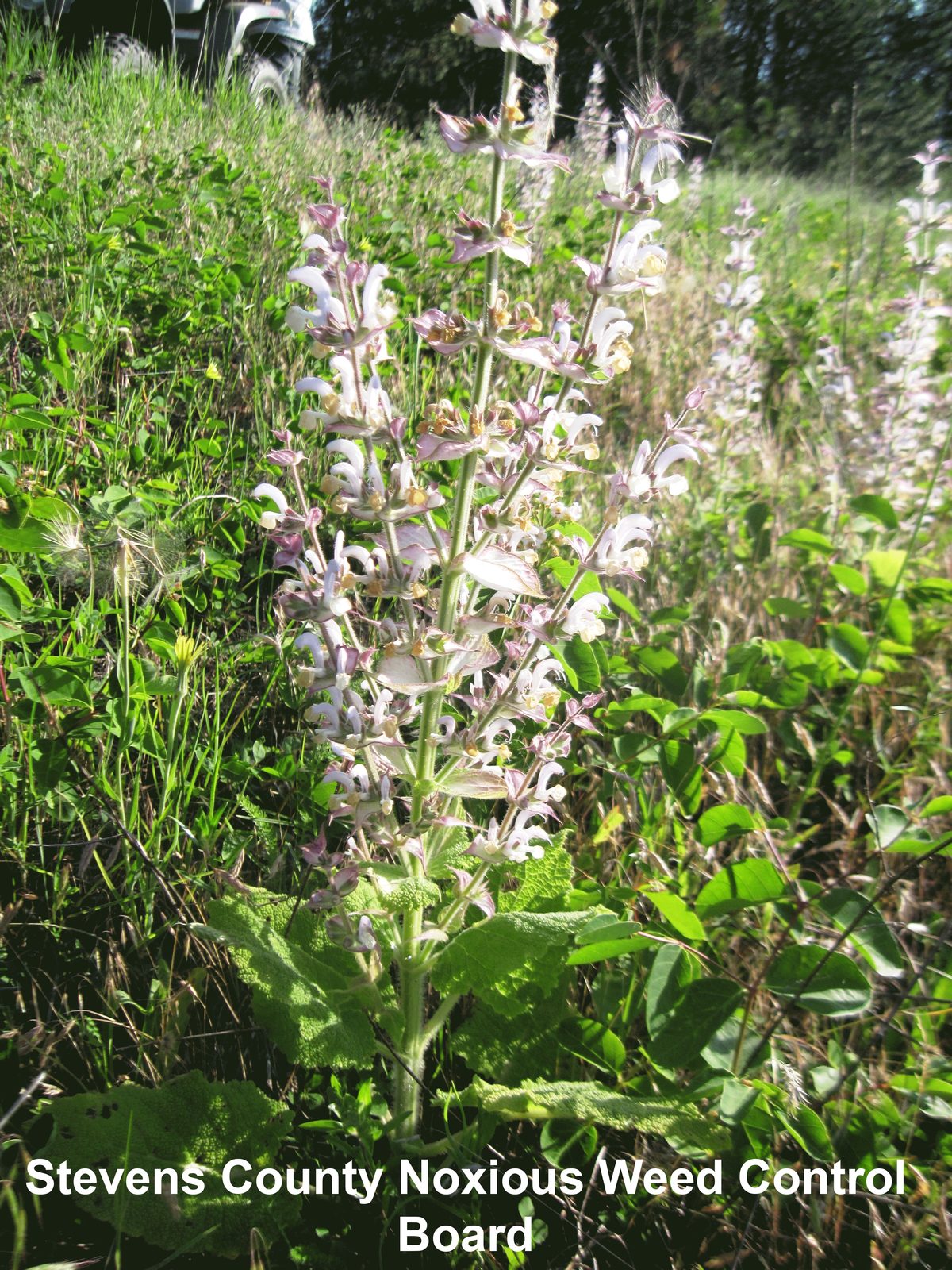Clary Sage
Salvia sclarea

Family: Lamiaceae
Other Common Names: Europe sage
Weed class: A
Year Listed: 1998
Native to: Asia and Europe
Is this Weed Toxic?:
not known to be
Legal listings:
WAC 16-752; WSDA Quarantine list (prohibited plant list)
Why Is It a Noxious Weed?
Clary sage invades range land and poses a threat to forage production and plant biodiversity by displacing more desirable species. Clary sage is a close relative of Mediterranean sage (Salvia aethiopis), another Class A noxious weed in Washington.
How would I identify it?
General Description
Clary sage is a much-branched and upright biennial or perennial herb that can grow 6 feet tall. The entire plant is hairy and has a strong odor due to an essential oil.
Flower Description
Many whorls of flowers occur on upper parts of stems. Each whorl has a pair of various colored bracts under it, bracts about 1/2 to 1 inch long. Flower petals fused to form two ‘lips’, upper lip is purple and lower lip is whitish, though colors may vary.
Leaf description
Leaves are oppositely arranged. Lower leaves have stalks (petioles) and upper leaves are smaller and have shorter stalks. Leaves have a wrinkled texture and have toothed to double toothed margins. Leaf blades up to 8 inches long.
Stem description
Stems branching toward their tips.
Fruit Seed Description
Flowers form 4 nutlets, with each nutlet containing one seed.
May Be Confused With
Beside Mediterranean sage, clary sage is similar to meadow clary (Salvia pratensis), another Class A noxious weed. One difference is its larger bracts under the flowers, compared to the smaller bracts of the meadow clary. For help with identification, contact your county noxious weed coordinator.
Where does it grow?
Clary sage can grow in eastern and western Washington. It grows on slopes (with Ponderosa pine in eastern WA), with well-drained soil, less well-drained meadow sites, roadsides and other disturbed places. Please click here to see a county level distribution map of clary sage in Washington.
How Does it Reproduce?
Clary sage spreads by seed.
How Do I Control It?
Mechanical Control
Hand-pulling or digging can be effective, especially for small infestations. Be sure to dispose of plants properly and make sure all flowerheads go in the trash to prevent new infestations.
Herbicide Control
Herbicide information is currently not included in the PNW Weed Management Handbook for clary sage but check back as this resource is continually being updated. See the additional links below for information or contact county noxious weed coordinator. Revegetate with desirable species.
For More Information
See our postcard for early detection information about meadow clary and clary sage.
See our Written Findings for more information about clary sage (Salvia sclarea).
Stevens County NWCB Fact Sheet on clary sage












